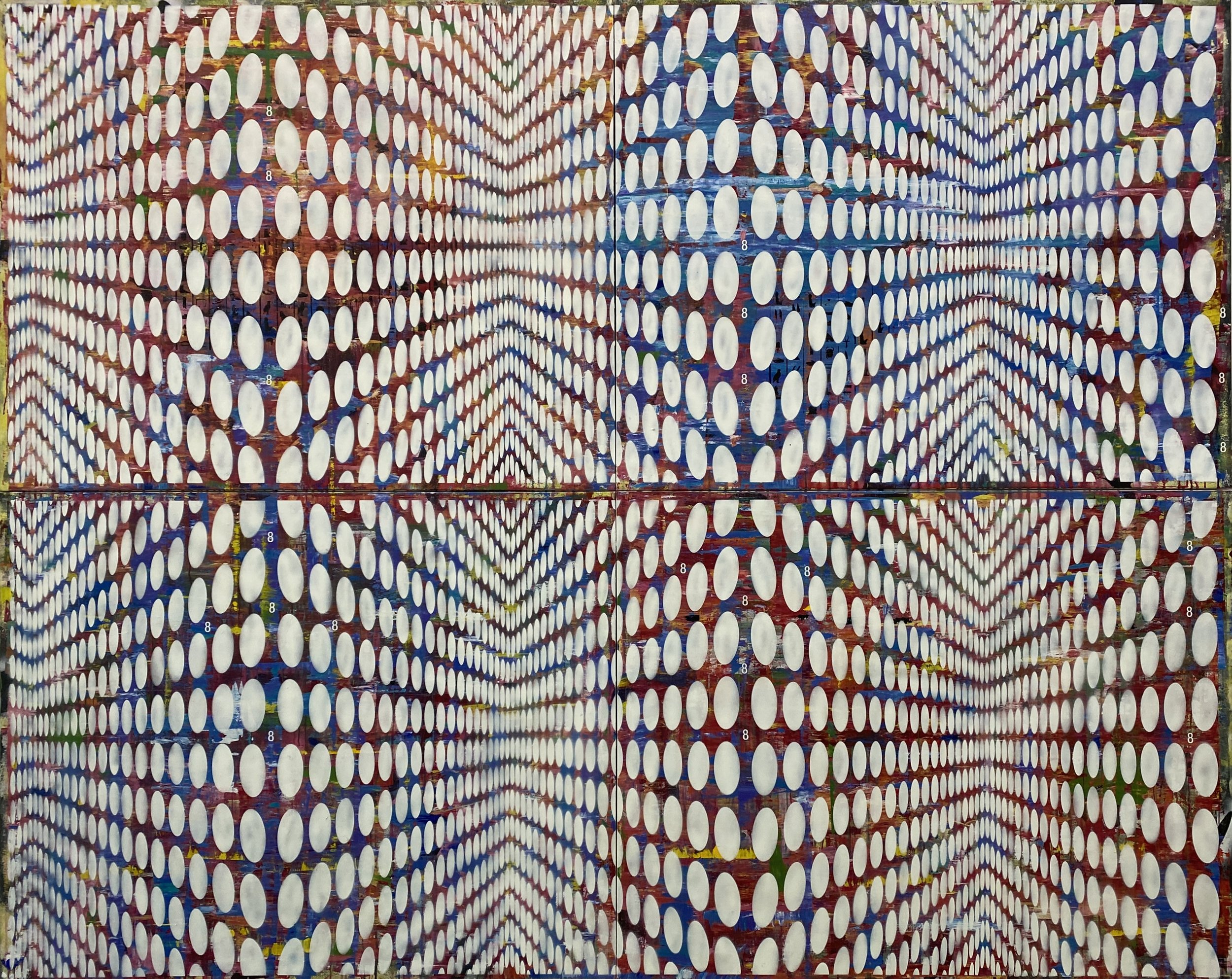Coming and Going: New work of Algernon Miller
September 8 - October 28, 2023
Curated by Bob Dilworth and Karen Conway
EXHIBITION OVERVIEW:
Al Miller’s work draws on sacred geometry, numerology, and the structures of nature, science and architecture, and he frequently references African and African-American artistic heritage, such as beading and quilting traditions.
Yet, his use of new technologies traverses the so-called digital divide that associates blackness with technological disadvantage.
Along with many Afrofuturist thinkers, he is conscious of a long line of “Blacks in Science,” under-recognized black inventors and innovators, and he experiments with sound, kinetic energy, solar-power, 3D animation, and holography. His emphasis on light, both represented and used as an artistic medium, undermines historical associations of blackness with darkness, and reinforces Afrofuturist metaphysical concepts.
“This new body of work focuses on abstract painting as the foundation upon which everything else is constructed. It is where work and play are combined, it’s my Ground Zero. I then layer patterns and codes to create a synthesis of painting with the illusion of dimensionality, the coming and going of all things in space and time and where past, present, and future exist simultaneously.” — Algernon Miller
ABOUT THE ARTIST:
Algernon Miller is a leading figure in the intellectual wing of Afrofuturist art. Educated at the School of Visual Arts (1965-67) and The New School (1967-68) during America’s cultural revolution, Al Miller’s Downtown art world included Happenings and Pop, Fluxus, and Warhol films, the Beat Poets along with the Afrofuturist jazz scene of Sun Ra. Deeply influenced by African studies and Afrocentric writings, Al Miller evolved what he calls a “transformationist” consciousness that synthesizes past, present, and future.
Miller’s major public commissions include his Tree of Hope on Adam Clayton Powell Boulevard, and the Frederick Douglass Circle at the northwest corner of Central Park, which opened in 2010. His works are in several prominent collections, and have been featured at New York’s Museum of Arts & Design (MAD), the New Museum, the Whitney, The Studio Museum, the Schomburg Center for Research in Black Culture, the Boston Museum of Fine Arts, and in France at the Espace Lyonnais d'Art Contemporain, Lyon, among others.




